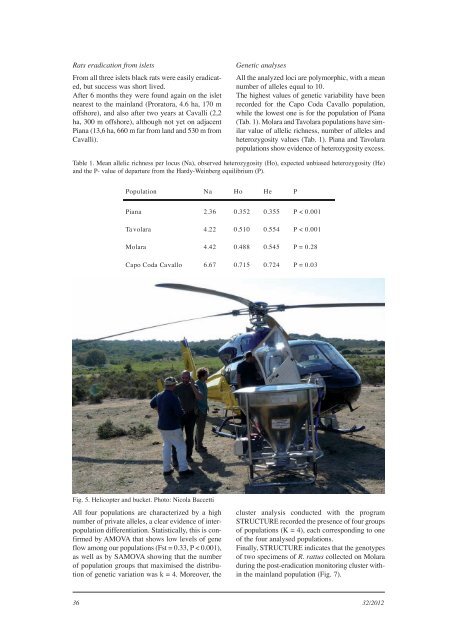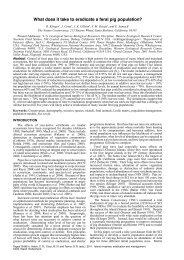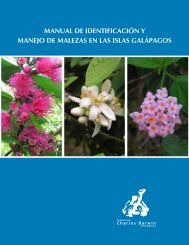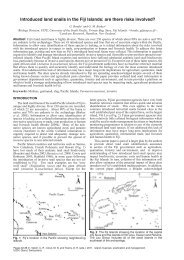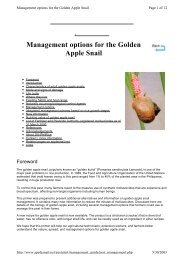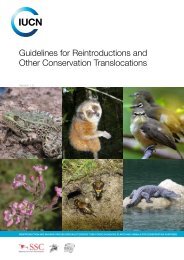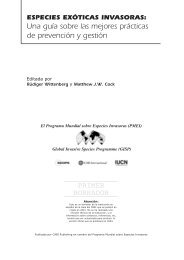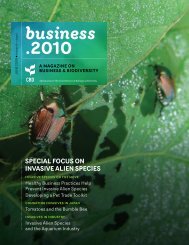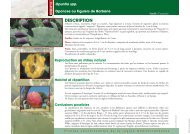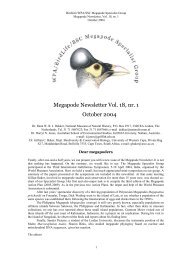Aliens - ISSG
Aliens - ISSG
Aliens - ISSG
You also want an ePaper? Increase the reach of your titles
YUMPU automatically turns print PDFs into web optimized ePapers that Google loves.
Rats eradication from islets<br />
From all three islets black rats were easily eradicated,<br />
but success was short lived.<br />
After 6 months they were found again on the islet<br />
nearest to the mainland (Proratora, 4.6 ha, 170 m<br />
offshore), and also after two years at Cavalli (2,2<br />
ha, 300 m offshore), although not yet on adjacent<br />
Piana (13,6 ha, 660 m far from land and 530 m from<br />
Cavalli).<br />
Table 1. Mean allelic richness per locus (Na), observed heterozygosity (Ho), expected unbiased heterozygosity (He)<br />
and the P- value of departure from the Hardy-Weinberg equilibrium (P).<br />
Population Na Ho He P<br />
Piana 2.36 0.352 0.355 P < 0.001<br />
Tavolara 4.22 0.510 0.554 P < 0.001<br />
Molara 4.42 0.488 0.545 P = 0.28<br />
Capo Coda Cavallo 6.67 0.715 0.724 P = 0.03<br />
Fig. 5. Helicopter and bucket. Photo: Nicola Baccetti<br />
All four populations are characterized by a high<br />
number of private alleles, a clear evidence of interpopulation<br />
differentiation. Statistically, this is confirmed<br />
by AMOVA that shows low levels of gene<br />
flow among our populations (Fst = 0.33, P < 0.001),<br />
as well as by SAMOVA showing that the number<br />
of population groups that maximised the distribution<br />
of genetic variation was k = 4. Moreover, the<br />
Genetic analyses<br />
All the analyzed loci are polymorphic, with a mean<br />
number of alleles equal to 10.<br />
The highest values of genetic variability have been<br />
recorded for the Capo Coda Cavallo population,<br />
while the lowest one is for the population of Piana<br />
(Tab. 1). Molara and Tavolara populations have similar<br />
value of allelic richness, number of alleles and<br />
heterozygosity values (Tab. 1). Piana and Tavolara<br />
populations show evidence of heterozygosity excess.<br />
cluster analysis conducted with the program<br />
STRUCTURE recorded the presence of four groups<br />
of populations (K = 4), each corresponding to one<br />
of the four analysed populations.<br />
Finally, STRUCTURE indicates that the genotypes<br />
of two specimens of R. rattus collected on Molara<br />
during the post-eradication monitoring cluster within<br />
the mainland population (Fig. 7).<br />
36 32/2012


